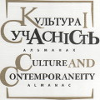Features of the formation of the object-space environment in the zone of historical building of cities
Abstract
Purpose of the article. To emphasize the peculiarities of the formation of the subject-spatial environment in the zone of the historical building of cities and to offer scientifically substantiated recommendations on the compositional combination, restoration, and maintenance of aesthetic and functional parameters of the background historical architectural and spatial building of cities. Research methodology. The methodological basis of the research is based on the integrated use of general scientific research methods: analysis, synthesis, comparison and generalization of previously proposed ideas and proposals. Scientific novelty. As a result of this research, features of the formation of the urban environment, in particular, the background part of the historical place of modern cities, and ways of harmonizing new and historical architectural and spatial objects are disclosed. It's done the accent on the need for the development of normative legal acts and project proposals governing relations related to the reconstruction and restoration of architectural objects and adjoining recreational areas located in the zone of historical building of cities that are not architectural monuments, but create a kind of background and atmosphere for significant architectural objects. Formulated recommendations for the formation of the architectural and spatial composition of historic parts of cities, which should be taken into account when designing new objects in the existing structure of the town. Conclusions. Analysis of scientific papers and publications showed that the principles of harmonization of urban development should take into account a number of the following factors:
- continuity of historical development of planning and development;
- the balance of elements of the urban environment and their mutual conditionality;
- harmonious placement of buildings and features of the natural complex;
- hierarchy of urban planning and architectural ensembles;
- the complementarity of the historical elements of the urban environment with new items;
- differentiation of the system of formation of the urban environment;
- systematization of the location of design elements in the structure of the urban environment;
- the consistency of color decision of new aspects of the urban environment with the existing architectural and natural environment;
- the functionality of the original structure and design elements;
- artistic and aesthetic perception of the appearance of architectural forms.
Also, the design of new facilities should take into account their impact not only on the individual, historically valuable objects but also on the historical environment in which it is assumed their appearance. It should also be emphasized that to address the preservation of the historically formed urban environment with its characteristic features, spatial and visual links; the historical center should be considered as the only integrated monument of urban planning and architecture.
Downloads
Published
Issue
Section
License

This work is licensed under a Creative Commons Attribution 4.0 International License.
Authors who publish with this journal agree to the following terms:
- Authors retain copyright and grant the journal right of first publication with the work simultaneously licensed under a Creative Commons Attribution License that allows others to share the work with an acknowledgement of the work's authorship and initial publication in this journal.
- Authors are able to enter into separate, additional contractual arrangements for the non-exclusive distribution of the journal's published version of the work (e.g., post it to an institutional repository or publish it in a book), with an acknowledgement of its initial publication in this journal.
- Authors are permitted and encouraged to post their work online (e.g., in institutional repositories or on their website) prior to and during the submission process, as it can lead to productive exchanges, as well as earlier and greater citation of published work (See The Effect of Open Access).

